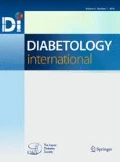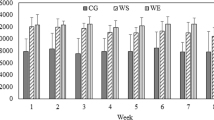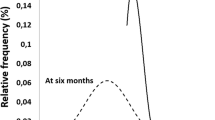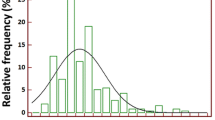Abstract
Background
High blood pressure (BP) and diabetes have been suggested to be non-communicable diseases (NCDs), and they are components in the definition of metabolic syndrome. Further, several studies have reported that the risk of developing NCDs can be reduced by increased physical activity. In addition, a daily target of 10,000 steps has been generally suggested to increase physical activity in sedentary lifestyles. Therefore, the purpose of this study was to determine the effect of an accumulation of 10,000 steps daily on BP and blood glucose in overweight participants.
Methods
Participants were recruited from males and females, aged 35–59 years, with sedentary lifestyles. A longitudinal quasi-experimental study was designed with 35 participants who had body mass indices ≥25 kg/m2. These volunteers were assigned to the 12-week pedometer-based walking program (an accumulation of at least 10,000 steps daily). Blood glucose and BP were measured before and after the intervention.
Results
Systolic blood pressure (SBP) was significantly lower in 30 individuals who accumulated 10,000 steps daily (−13.74 mmHg). In addition, the reduction of blood glucose levels (−14.89 mg/dl) in the intervention participants was statistically significant (p < 0.001).
Conclusion
The accumulation of at least 10,000 steps daily resulted in decreased SBP and blood glucose in overweight Thai subjects. It could also reduce the risk of cardiovascular disease (e.g., hypertension and diabetes).

Similar content being viewed by others
References
Huang PL. A comprehensive definition for metabolic syndrome. Dis Model Mech. 2009;2:231–7.
Park YW, Zhu S, Palaniappan L, Heshka S, Carnethon MR, Heymsfield SB. The metabolic syndrome: prevalence and associated risk factor findings in the US population from the Third National Health and Nutrition Examination Survey. Arch Intern Med. 2003;163:427–36. doi:10.1001/archinte.163.4.427.
Jitnarin N, Kosulwat V, Rojroongwasinkul N, Boonpraderm A, Haddock C, Poston W. Prevalence of overweight and obesity in Thai population: results of the National Thai Food Consumption Survey. Eat Weight Disord. 2001;201(16):e242–9.
Haskell WL, Lee IM, Pate RR, Powell KE, Blair SN, Franklin BA, Macera CA, Health GW, Thompson PD, Bauman A. Physical activity and public health: updated recommendation for adults from the American College of Sports Medicine and the American Heart Association. Med Sci Sports Exerc. 2007;39:1423–34.
Le Masurier GC, Sidman CL, Corbin CB. Accumulating 10,000 steps: does this meet current physical activity guidelines? Res Q Exerc Sport. 2003;74:389–94.
Tudor-Locke C, Hatano Y, Pangraz RP, Kang M. Revisiting “How many steps are enough?”. Med Sci Sports Exerc. 2008;40:S537–43.
Schneider PL, Bassett DR Jr, Thompson DL, Pronk NP, Bielak KM. Effects of a 10,000 steps per day goal in overweight adults. Am J Health Promot. 2006;21:85–9. doi:10.4278/0890-1171021.2.85.
Wilde BE, Sidman CL, Corbin CB. A 10,000 steps count as a physical activity target for sedentary women. Res Q Exerc Sport. 2001;72:411–4. doi:10.1080/02701367.2001.10608977.
Morgan CF Jr, Pangrazi RP, Beighle A. Using pedometers to promote physical activity in physical education. JOPERD. 2003;74(7):33–8.
Topouchian J, Agnoletti D, Blacher J, Youssef A, Ibanez I, Khabouth J, Khawaja S, Beaino L, Asmar R. Validation of four automatic devices for self-measurement of blood pressure according to the international protocol of the European Society of Hypertension. Vasc Health Risk Manag. 2011;7:709–17.
Chobanian AV, Bakris GL, Black HR, Cushman WC, Green LA, et al. The seventh report of the joint national committee on prevention, detection, evaluation, and treatment of high blood pressure: the JNC 7 report. JAMA. 2003;289:2560–72.
Bravata DM, Smith-Spangler C, Sundaram V, Gienger AL, Lin N, et al. Using pedometers to increase physical activity and improve health: a systematic review. JAMA. 2007;298:2296–304.
Freak-Poli R, Wolfe R, Backholer K, de Courten M, Peeters A. Impact of a pedometer-based workplace health program on cardiovascular and diabetes risk profile. Prev Med. 2011;53(3):162–71. doi:10.1016/j.ypmed.2011.06.005 Epub 2011 Jun 26.
Semlitsch T, Jeitler K, Hemkens LG, Horvath K, Nagele E, Schuermann C, Pignitter N, Herrmann KH, Waffenschmidt S, Siebenhofer A. Increasing physical activity for the treatment of hypertension: a systematic review and meta-analysis. Sports Med. 2013;43:1009–23. doi:10.1007/s40279-013-0065-6.
Araiza P, Hewes H, Gashetewa C, Vella CA, Burge MR. Efficacy of a pedometer-based physical activity program on parameters of diabetes control in type 2 diabetes mellitus. Metabolism. 2006;55:1382–7.
Smith TC, Wingard DL, Smith B, Kritz-Silverstein K, Barrett-Connor E. Walking decreased risk of cardiovascular disease mortality in older adults with diabetes. J Clin Epidemiol. 2007;60:309–17.
Williams PT, Thompson PD. Walking versus running for hypertension, cholesterol, and diabetes mellitus risk reduction. Arterioscler Thromb Vasc Biol. 2013;33:1085–91.
Kim J, Tanabe K, Yoshizawa Y, Yokoyama N, Kuna S. Lifestyle-based physical activity intervention for one year improves metabolic syndrome in overweight male employees. Tohoku J Exp Med. 2013;229(1):11–7.
Acknowledgements
The authors acknowledge the help of Mr. Paitoon Dhari, the head of the community health service, and Mrs. Somsong Duren, a registered nurse, in organizing and overseeing participant recruitment in the community. The authors would also like to thank the participants in the community for their participation. This study was fully supported by Thammasat University.
Author information
Authors and Affiliations
Corresponding author
Ethics declarations
Conflict of interest
There is no conflict of interest in the present study.
Human rights statement and informed consent
All procedures followed were in accordance with the ethical standards of the responsible committee on human experimentation (Thammasat University, Thailand) and with the Helsinki Declaration of 1964 and later versions. Informed consent or a substitute for it was obtained from all patients for being included in the study.
About this article
Cite this article
Yuenyongchaiwat, K., Pipatsitipong, D. & Sangprasert, P. Increasing walking steps daily can reduce blood pressure and diabetes in overweight participants. Diabetol Int 9, 75–79 (2018). https://doi.org/10.1007/s13340-017-0333-z
Received:
Accepted:
Published:
Issue Date:
DOI: https://doi.org/10.1007/s13340-017-0333-z




